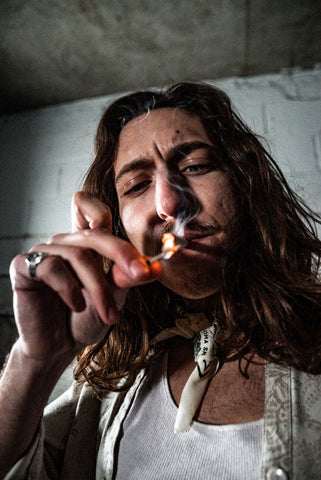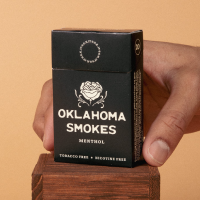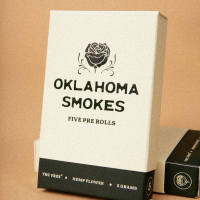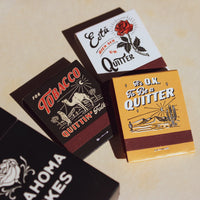While you may have been unaware of CBD 5 or 10 years ago, the recent legalization of hemp within the United States has created the realization that hemp has just as many uses as it has benefits.
Hemp has remained a great resource for clothing, paper, fabrics, building materials, lotions, oils, and a resource to quit smoking.
To encourage the use of hemp further, the rapid-growing plant is able to flourish in most regions growing around 10 feet tall.
So, what about smoking hemp? Here’s what you need to know.
What is CBD?
Cannabidiol, also referred to as CBD, is the second most potent compound popularly found in the cannabis plant.
The cannabis plant produce a more than 100 cannabinoids, such as:
- CBGA (Cannabigerolic acid)
- THCA (Δ9-tetrahydrocannabinolic acid)
- CBDA (Cannabidiolic acid)
- CBCA (Cannabichromenenic acid)
- CBGVA (Cannabigerovarinic acid)
- THCVA (Tetrahydrocanabivarinic acid)
- CBDVA (Cannabidivarinic acid)
- CBCVA (Cannabichromevarinic acid)
A major factor in cannabis outcome is the focus of the grower. For tens of thousands of years, growers have focused on specific crop outcomes known as strains. Cannabis can first be split into two primary strains -- Indica and Sativa.
Indica refers to cannabis first grown in India, whose growers were focused on the psychoactive effects found in tetrahydrocannabinol (THC). This strain is often associated with mind and body relaxation and, in more intense cases, the feelings of being “held down.” It would later be understood that Indica was high in THCA.
Early sativa would be grown for its fibrous properties and its nutritious seeds, with the entire plant being used for animal bedding, oils, and composts. Over the years, various cultures would begin using sativa for more “medical” uses.
Later on, cannabis plants would be crossbred for strains known as hybrids, which can be found throughout a range of blends. It was during this time that THCVA was found to give a spike of energy, both mentally and physically.
With the use of cannabis sativa changing, the world needed a defining term for non-psychoactive cannabis plants void of the effects of THC -- hence, the term hemp came about.
Hemp is a highly regulated form of cannabis that must be grown with less than 0.3% THC, which is more widely accepted and available on store shelves. While THC is highly regulated, there are minimal restrictions on the CBD content within the plant according to state laws.
So far, only one CBD product has been approved by the Food and Drug Administration (FDA). It is called Epidiolex, a dose-controlled treatment for symptoms of epilepsy.
As CBD grows in popularity with the use of creams, lotions, tinctures, vape juices for vaporizers, edible gummies, smoking alternatives, and much more, growers have become encouraged to grow hemp packed with the cannabinoid and its health benefits.
CBD vs. CBDA
You may have noticed that on the list of cannabinoids, CBD isn’t found as one of the top cannabinoids. Instead, cannabidiolic acid, or CBDA, is found in the cannabis plant.
CBD is found in trace amounts in the cannabis plant, and while the cannabis plant is packed with various acids, it will have minimal to no effect on your body.
When purchasing CBD, it’s important to know if you’re buying CBD or CBDA. If you plan on using products that will not be heated during use, CBD is required and may be labeled as heated CBD or just CBD.
If you purchase products that state unheated, raw, or CBDA, the hemp will need to be used hot, such as smoking, cooking, or vaping, or processed to remove the acids.
So, how do you remove the acidic compound?
To reduce the acidic compound, two primary methods are used, decarboxylation with the use of heat, and curing, which involves drying the leaves.
Decarboxylation involves heating the cannabis flower to around 240 degrees Fahrenheit for 30 minutes to 1 hour, which breaks down the acids and leaves behind CBD.
Curing or drying is done over time and often requires a well-ventilated area. During the process, the acidic element begins to break down, leaving behind CBD. Once fully furred, much of the CBDA is converted.
Is Weed CBD the Same as Hemp CBD?
When talking about CBD, most people instantly think of smoking cannabis or weed. These ideas are normal since smoking marijuana within the U.S. has been common for nearly 100 years.
The hemp plant, a form of cannabis and a direct relative to marijuana, can also be found packed full of CBD.
Is the CBD in hemp and the CBD found in marijuana the same?
Simple answer, yes.
These are the most common ways to find, use, and enjoy the beneficial effects of CBD.
Smoking CBD

Smoking CBD is generally done in two ways, by smoking an oil or by smoking the flower.
CBD Oils
CBD oils are smoked through vape pens or similar vaping products where the oil is pulled over a heated coil and vaporizes.
The use of the CBD oil method became popular due to the reduction of actual smoke, causing it to stick less to clothing, skin, or fabrics.
CBD distillates, a flavorless odorless form of concentrate gathered through a heating process known as distilling, allows CBD to be added to any carrier oil without changing its main flavors. This means you can get fruity or savory CBD vape flavors.
CBD pens are a pre-filled option with a built-in battery known to be cost-effective and fit in your pocket for on-the-go use. They are a great option for trying vape as a form of CBD smoking but remain highly limited by flavors and require an entire new pen when switching flavors.
Vape mods are larger, controlled forms of vaping that allow the user to adjust their heated coils, temperature levels, and much more. This allows you to turn the amperage up or down, adjusting your smoking temperature and reducing the amount of CBD burn off. While they are more cost effective, flavored juices are endless, from cotton candy to java, and switching flavors can be done fairly easily.
CBD oils could also be consumed by ingesting. It could be packaged in capsule form as a supplement or added to one’s food or drinks.
CBD Flower
Smoking CBD flowers or hemp flowers is essentially smoking the flowering buds of the cannabis plant. This natural leafy nature allows CBD flowers to remain an ideal choice for tobacco and marijuana smokers as a form of quitting.
Using CBD cigarettes, which look, feel, and smoke like a regular cigarette, allows users to avoid addictive nicotine while easing certain aspects of their cravings. The hemp cigarettes don’t smell or taste like tobacco, allowing you to gain your sense of taste and smell back while also smelling better to those around you.
If you are craving nicotine while using CBD cigarettes, it’s recommended that you utilize nicotine patches. This avoids you tasting or smoking an actual tobacco cigarette while reducing your nicotine dose over time.
Hemp also remains a great source to quit, or to use in place of marijuana. Since both originate from the same plant, you can expect similar tastes and smells. It’s an ideal choice when you want the benefits of CBD without the high, but a similar experience and ritual to smoking. Some consumers even prefer hemp for their parties to help them feel better and less physically worn.
Control Your Heat

While smoking CBD is simple and straightforward, keeping some key tips in mind can create a more enjoyable and worthwhile experience.
CBD is typically released at around 350 degrees Fahrenheit. Temperatures exceeding this 350 degrees could destroy the CBD, meaning the smoke you just inhaled may not actually be beneficial.
A typical Bic lighter flame burns at around 3,590 degrees Fahrenheit, and torch lighters even hotter.
The red cherry that appears when you light a CBD cigarette is around 900 degrees Fahrenheit. You’re not actually smoking where you see it is lit. It’s your inhalation that pulls that heat over the hemp flower, releasing the CBD.
When vaping, you want to keep your coil temperature somewhere around the CBD’s boil point of 350 degrees.
Summary
Although CBD is found in hemp and marijuana, you can rest assured that strict regulations on cannabis and CBD products will ensure you receive a quality tested product.
As the risks of tobacco use have become well known, Oklahoma Smokes have taken a stand to help smokers pull away from the addictive habit with the use of high quality, hemp cigarettes. Are you ready to become tobacco-free, yourself?
Sources
Hemp vs. Marijuana: What's the Difference? - Healthline
CBDA Vs CBD: What Are the Differences? | Analytical Cannabis
What Is the Temperature of a Bic Lighter Flame? - Reference
Does CBD Lose Its Potency in Food? - MyRecipes
FAQs on Smoking CBD
1. Does smoking CBD make you high?
CBD alone will not make you high. Full-spectrum CBD oils might contain other cannabinoids, including trace amounts of THC, but this will not be enough to cause a high.
2. What are the benefits of smoking CBD?
CBD is currently being studied as a treatment for depression, anxiety, and post-traumatic stress disorder (PTSD). A CBD product (Epidiolex) is currently FDA-approved as a treatment for epilepsy symptoms.
3. How long does it take for CBD to enter the bloodstream?
This will depend on how you take the CBD. The fastest ways for CBD to enter the bloodstream are through smoking, vaping, or sublingual methods.






